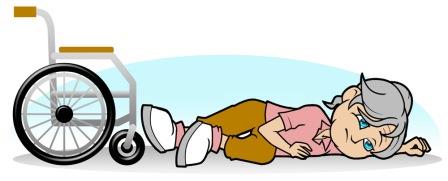|
|||||||||||||||||||||||||||||||||||||||||||||||||||||||||||||||||||||
Nursing homes should always make preventing falls a high priority because falls can lead to serious injuries or even death. All nursing homes are legally required to assess residents for fall risks when they are first admitted based on medical history and constantly throughout their stay depending on their physical/mental condition. Performing a fall risk assessment should be done when designing a resident’s care plan to promote health and safety. When these assessments are done incorrectly or not completed, a resident could have a higher risk of falling. While residents at a high risk of falling out of their
wheelchairs cannot be physically or chemically restrained, they should
be placed in an area, such as in front of the nurse’s station,
where someone will see if they try to get up from their wheelchair.
2.) Increase Staff - The nursing home should hire enough staff to help and monitor residents. The nursing home should reduce the amount of paperwork staff has to do so they can give more attentive care to patients. The nursing home should specify at least one staff member to watch residents at high risk of falling. For example, residents who lean out of their wheelchairs often should not be left alone for even a few minutes. If someone cannot be with the resident in their room, the resident can be taken to the nurses’ station where he/she can be watched or to an activity room with other people. 3.) Properly Maintained Wheelchairs and Walking Aids – It is very important that wheelchairs and walking aids be checked regularly. Also, some residents may need wedge cushions in their wheelchairs to prevent sliding out. 4.) Properly Maintained Beds – For residents at risk of falling out of their bed, bed rails and mattresses could be placed on both sides of the bed. Bed alarms could be used in case the resident leaves the bed. Such precautions minimize the chance of a fall and if a fall occurs, the extent of the injury is less significant. 5.) Hip pads - They could be given to residents at risk of falling to reduce chance of a hip fracture. 6.) Ensuring proper footwear - Residents
should be encouraged to wear rubber-soled athletic shoes or lace-up
or strap-on shoes that fit snugly, rather than slip-on shoes instead
of wearing socks or slippers or going barefoot,. However, residents
must be evaluated for problems with gait, such as not being able to
lift and clear the floor with each step, which would make treaded shoes
more dangerous. 7.) Minimize the use of drugs - Many nursing home residents are given antipsychotics, tranquilizers, and other drugs in an effort to control their behaviors. Unfortunately, these drugs also cause confusion, unsteady gait, and loss of balance. Minimizing the use of such drugs will reduce one of the biggest causes of resident falls.
|
|||||||||||||||||||||||||||||||||||||||||||||||||||||||||||||||||||||
Home | About Us | Falls & Injuries | Nursing Home Fall Stories | Reporting Nursing Home Falls | How Residents are Dropped in Nursing Homes | Other Issues | Unexpected Deaths in Nursing Homes | Bed Sores | Choking | Malnutrition and Dehydration | Medication Errors / Overmedication in Nursing Homes | Sexual Abuse in Nursing Homes | Wandering and Elopment | Unexplained Bruises and Cuts | Infections and Sepsis | Problems with Nursing Home Staff | Choosing a Nursing Home | Nursing Home Alternatives | Legal Action | Attorney Directory | Wrongful Death in Nursing Homes | When You Should Sue a Nursing Home | Why Families Do Not Sue | Removing Residents From Nursing Homes | Contact Info
Web Site Designed By: Bright Idea Web Solutions
|
|||||||||||||||||||||||||||||||||||||||||||||||||||||||||||||||||||||

